
Early June 2013 in the garden
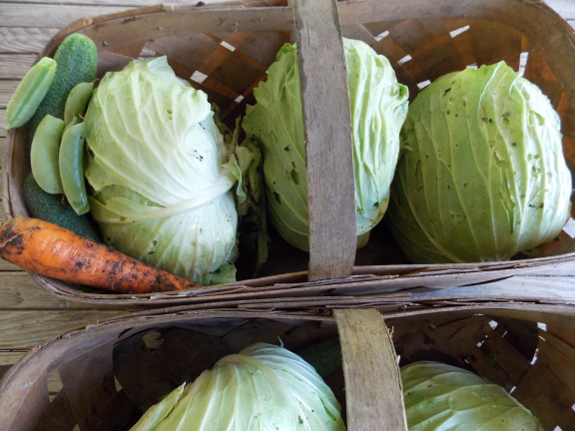
It's been a while
since I've written a sumup of the garden, which is mostly because
both the produce and the weeds are growing like crazy.
Broccoli and pea season has come and gone. For about a week
in the middle of June, the broccoli heads became so full of
southern cabbageworms that I barely wanted to cook them, but then
the checkered white butterflies stopped laying eggs, and recent
heads have been pristine. (The more common cabbage
worms from the cabbage white are still around in small
numbers, but they're not nearly as big of a deal for us.)
These early crops
were quickly replaced by cucumbers, which immediately began to
overwhelm us to the point where we had to give extras away.
Although I could cut back on my planting next year, it's nice to
have a quick, easy vegetable that scales up to feed an unlimited
number of mouths on a moments' notice, so I probably won't scale
down.
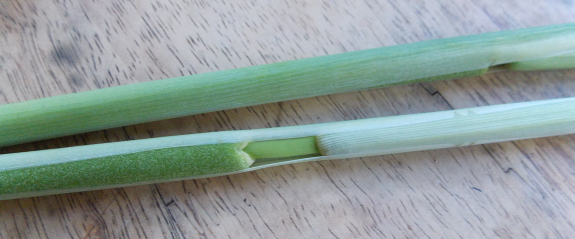
We're also enjoying
yellow crookneck squash, green beans, and the first huge cabbage
heads. Monday, Mark and I sampled cattail flowers for the
first time, which you're supposed to pick when they're still
enclosed in their sheath, remove from their husk, boil for 3
minutes, then eat like corn on the cob. Although Eric in
Japan reported cattails taste like avocadoes (one of our favorite
storebought addictions), Mark and I were less than impressed by
the cattail heads and deemed them mere survival food.
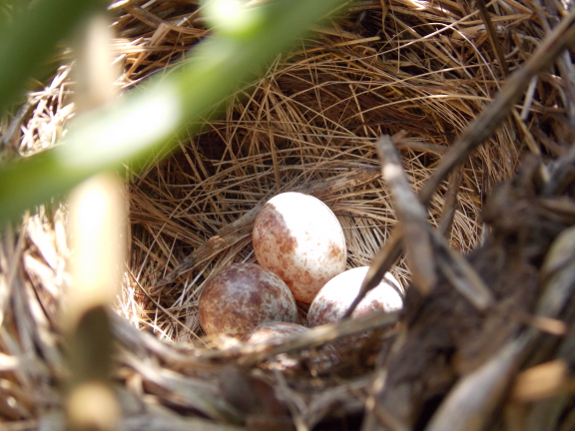
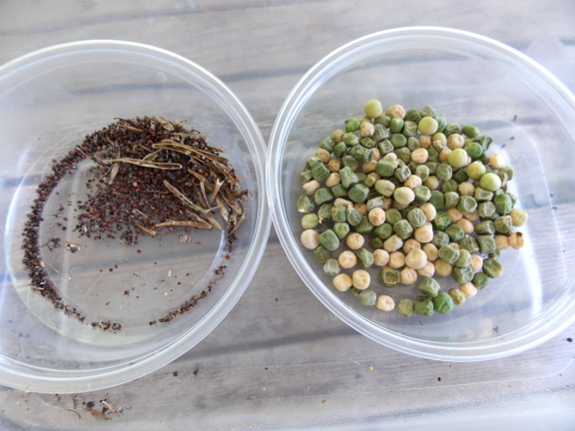 While waiting for the tomatoes to ripen
(which will mark the beginning of major preservation season),
we're staying busy planting late crops, renovating
the strawberry beds, weeding, mowing, and saving
seeds (kale, tokyo bekana, and peas so far). The kale
plants I left to go to seed are so vigorous, I'm considering using
the vegetable as a cover crop in areas that don't need to be
planted until mid summer, and the dying plants are still doing
double duty by sheltering a song sparrow nest. Kale plants
that have already given me their quota of seed (and that aren't
housing wildlife) made good deep bedding in the chicken coop.
While waiting for the tomatoes to ripen
(which will mark the beginning of major preservation season),
we're staying busy planting late crops, renovating
the strawberry beds, weeding, mowing, and saving
seeds (kale, tokyo bekana, and peas so far). The kale
plants I left to go to seed are so vigorous, I'm considering using
the vegetable as a cover crop in areas that don't need to be
planted until mid summer, and the dying plants are still doing
double duty by sheltering a song sparrow nest. Kale plants
that have already given me their quota of seed (and that aren't
housing wildlife) made good deep bedding in the chicken coop.
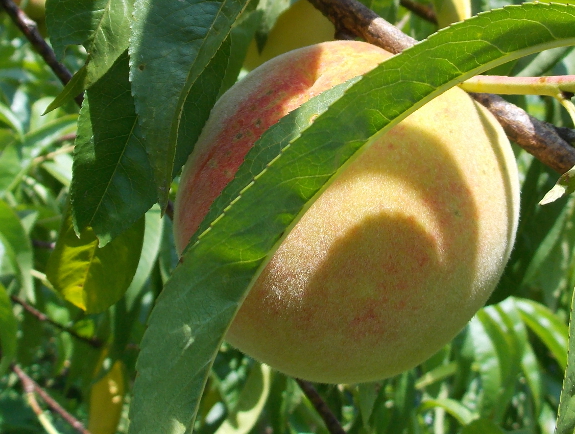
It continues to rain
nearly every day, but so far I haven't seen the fungal diseases
I've been dreading. Our first peaches (Redhaven) are already
thinking of ripening up, and despite insect damage to many fruits,
I suspect we'll enjoy a bountiful crop.
How's your garden
doing now that summer is officially here?
Want more in-depth information? Browse through our books.
Or explore more posts by date or by subject.
About us: Anna Hess and Mark Hamilton spent over a decade living self-sufficiently in the mountains of Virginia before moving north to start over from scratch in the foothills of Ohio. They've experimented with permaculture, no-till gardening, trailersteading, home-based microbusinesses and much more, writing about their adventures in both blogs and books.
Want to be notified when new comments are posted on this page? Click on the RSS button after you add a comment to subscribe to the comment feed, or simply check the box beside "email replies to me" while writing your comment.

The rain here south of Boston was absurd this June. We have had over a foot, but it looks like we are headed into a string of hot, 90+, days with much less rain.
I don't know how much rain you have had, but the jet stream is setting up more inland and a bit south from the east coast. Are you about to get even wetter?
Mitsy - I haven't seen an update on your blog in a long time. Great to hear an update from you here on Anna's page.
I live vicariously through our caretaker's garden. Last year was the year of the groundsquirrel with over 100 trapped and relocated (probably not relocated far enough away.) Just got the latest word/update. Deer and Elk by the dozens have nightly parties in the main garden area as well as the orchard. The caretakers go out each night to set off bottle rockets and flash spotlights.
Groundsquirrels seem to be a bit lighter . . . but that is probably because of all of the bobcats. There was a live groundsquirrel in a trap that was left in the greenhouse overnight; the relocation to occur the following morning. Overnight, something, most likely a bobcat, got into the greenhouse somehow, and dragged the trap around the greenhouse, dug up a bed, killed the groundsquirrel in the trap and ripped its leg off . . . not a pretty morning site for the resident vegan! A couple of evenings later a groundsquirrel was trapped and left outside the greenhouse until relocation could occur. Relocation happened . . . but by something else and the trap still hasn't been located. Luckily the last of the poultry hasn't been touched, safe inside the chicken house each night.
All of the cherries were eaten before they ripened. Red currants are ripe and blueberries will be ripe shortly. The big question will be the few pears that are on the tree for the first time. The neighbor had a pear tree that was loaded with fruit last year - stripped by a bear as the fruit ripened (the tree was shredded!)
And something has been chewing on the water lines. Life in the wild, wild Oregon west!
I know bears are around in your country in SW Virginia, but I never hear of bear problems with gardens/orchards . . . bears are a big problem with fruit in the Coastal Range (except apples, for some reason.)
I thought you might enjoy reading another perspective on cattails - http://honest-food.net/2013/07/18/cattail-pollen-pasta-recipe/
apparently Hank Shaw also isn't so taken with most cattail products.